The first time I slept in a shelter I built myself, I was camping out with many other families. Everyone else had tents. But I was determined to try something new.
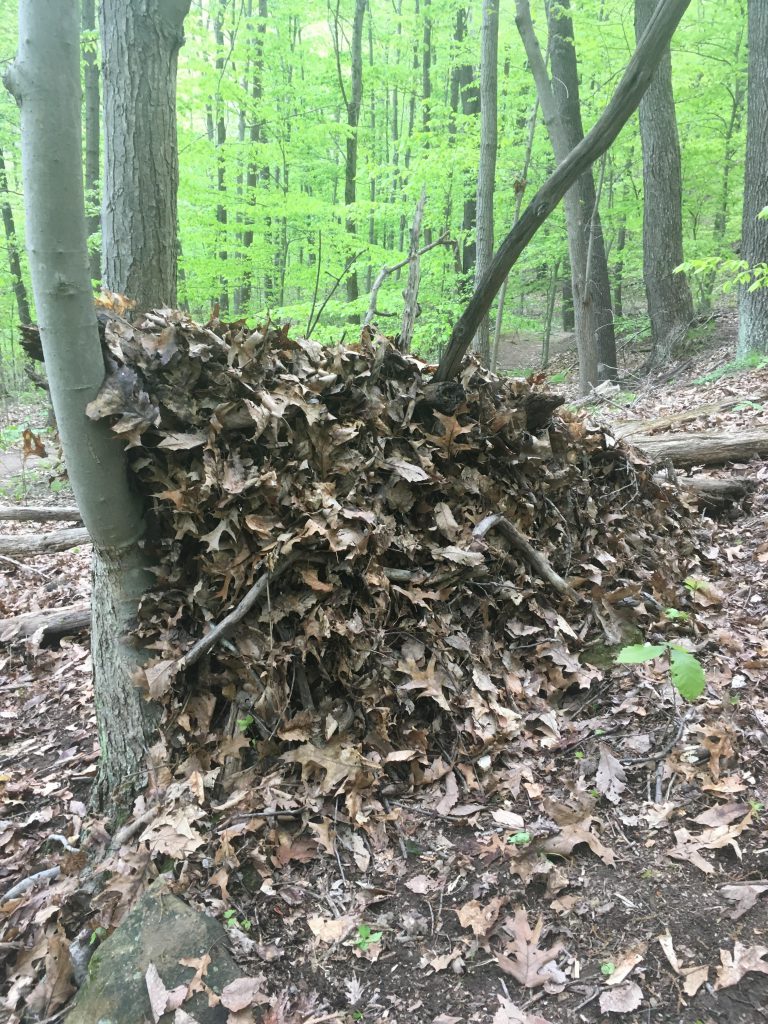
I found a solid tree to support a stick frame. I covered the sticks with thick, thick layers of leaves. Luckily, the kids helped carry big armfuls of leaves for the roof and the ground. It went much faster with many hands! I only barely fit inside the small lean-to.
As evening fell, the sky grew dark. Gulp…it was going to rain.
It rained all night, me tucked in under my narrow leaf roof. Everyone else was snuggled up in their tents.
But when morning came, I rolled out of my sleeping bag–dry and cheerful. You could see the dark line of wet leaves just a few inches away from my body, but under the shelter, the leaves stay light-colored and dry.
Everyone else came to breakfast
, complaining about how their tents had leaked and everything was wet. It turned out my leaf shelter was one of the driest places that night!
You can build a shelter to spend a night in the woods, too. Dani wrote about how animals insulate their shelters on Wednesday. We’ll use that advice today, and look at some ways humans make survival shelters.
Building shelters is easier than you think. The key is patience. You have to take the time to layer leaves or pine needles thick enough, or you will be cold and have leaks.
The Lean-to
The lean-to is my go-to shelter. It’s what I slept in at that first rainy camp-out. You just make one side of a roof. It’s faster than making a full hut. Here’s an example:
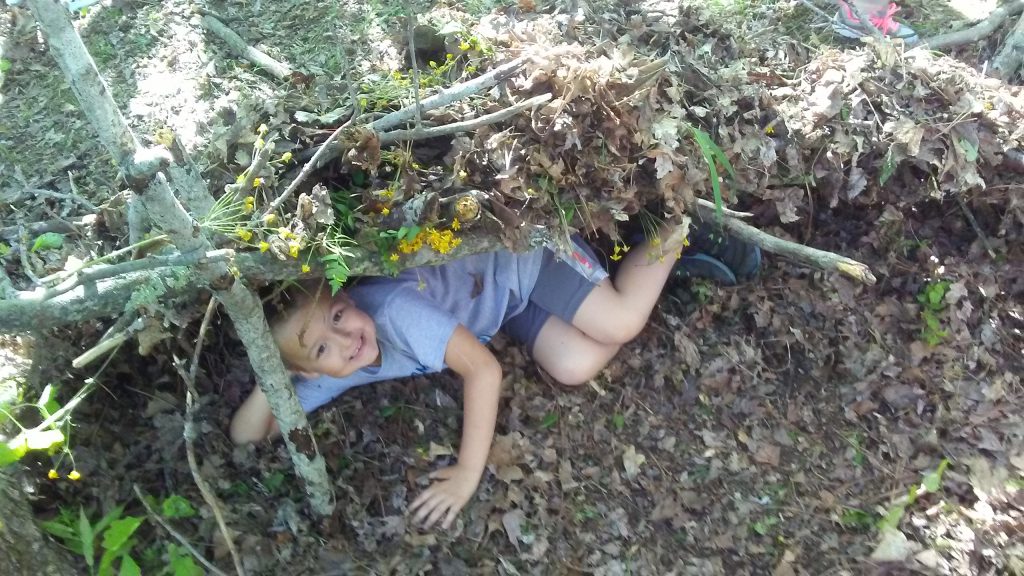
First, find a tree with a Y-shape in it.
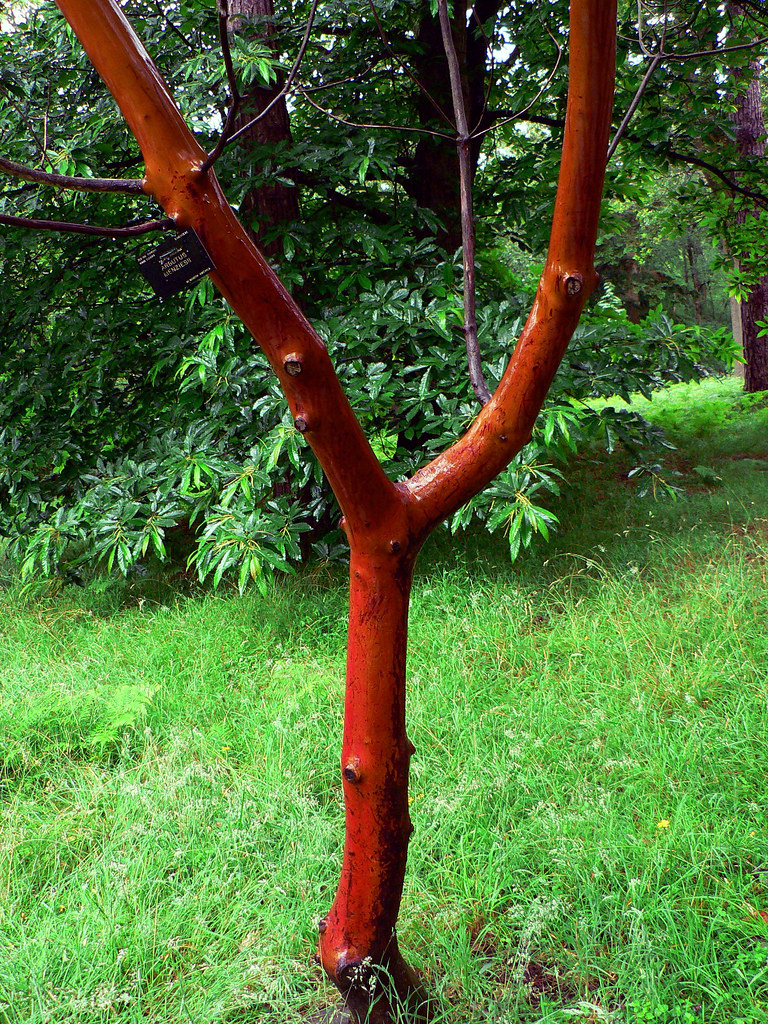
Next, choose a strong, straight stick to be the ridge pole of your roof. Rest one end of the ridge pole in the Y of the tree. Make sure the ridge pole is long enough for you to stretch out beneath it.
Then, find lots of smaller sticks. Lean the sticks against your ridge pole.
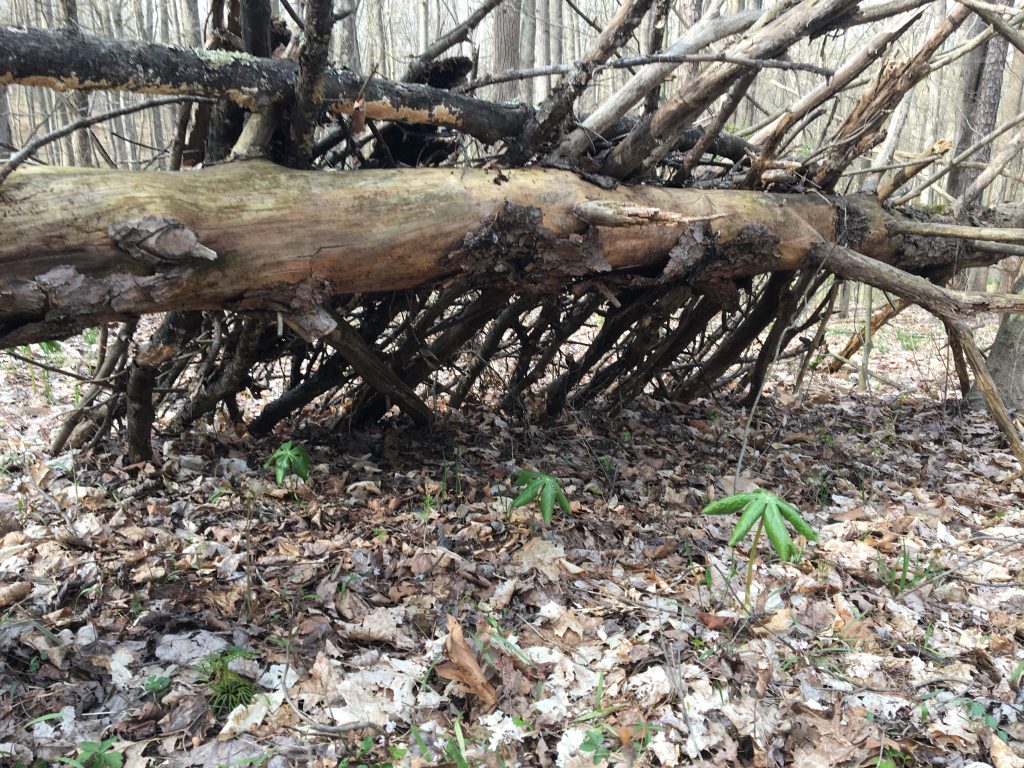
You want to make your lean-to just big enough for you to lay inside of, no bigger. That way you stay warmer, because there’s less space inside the shelter to warm up.
Now, it’s time to make the lean-to warm and water-proof. To do this, pile as many dead leaves on as you can! You want insulation anywhere that your shelter touches cold, air or ground. That means cover the roof/sides, AND cover the ground inside.

We recommend making your leaves at least 6 inches deep everywhere. That’s 6 inches even when you lay on top of the leaves, and smush them. So you’ll need extra leaves on the ground inside.
Watch out for poison ivy or other ouchy plants when you gather the leaves.
A Bigger Debris Hut
If you have more time, you can add another side to your lean-to. Then you have a full debris hut. This might make it warmer inside your shelter, or more comforting. BUT, it means you cannot build a fire. With a lean-to, you can build a fire outside of your shelter and still feel the heat.
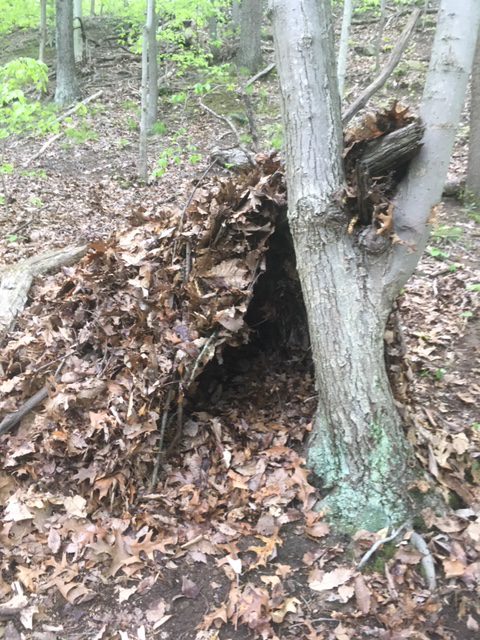
Even simpler: a pile of pine needles
If you don’t have a lot of time, you can skip building a stick-frame hut. Just make an enormous pile of leaves or pine needles, and climb inside! This isn’t so different from the leaf piles you rake in the fall.
You can lay out some sticks on the ground to help keep the pine needles from spreading away.
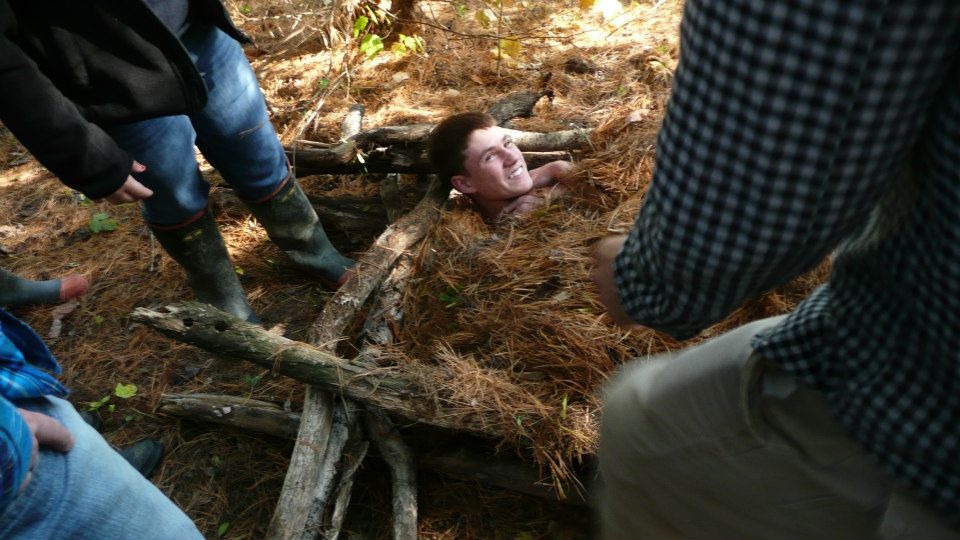
A pine needle bed like this is how one lost hiker survived over three days lost in the freezing mountains.
Remember–make the pile as deep as you can!
Tarp shelters
If you have something like a tarp with you, that is the quickest way to make a shelter of all. It helps to know a few knots.
You can make a lean-to, leaving room to build a fire outside of it. Before you tie up the tarp, make sure the wind won’t blow smoke into your shelter.
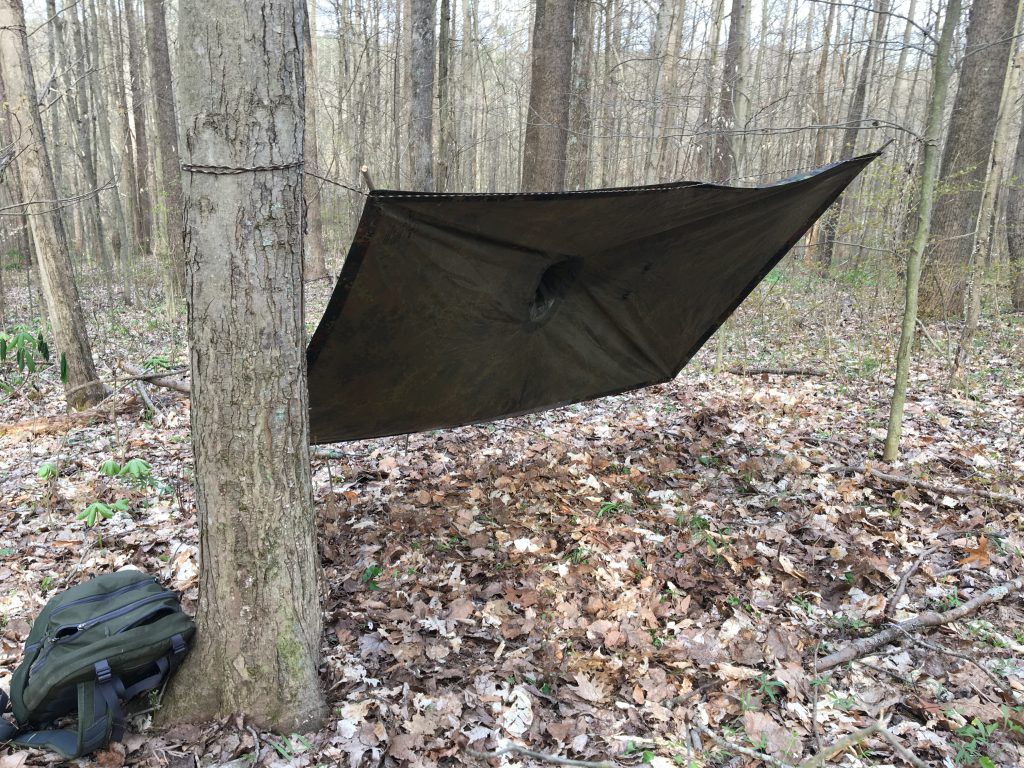
Or, you can make a shelter with two sides. You’ll need a long piece of rope or stick to use as a ridge pole
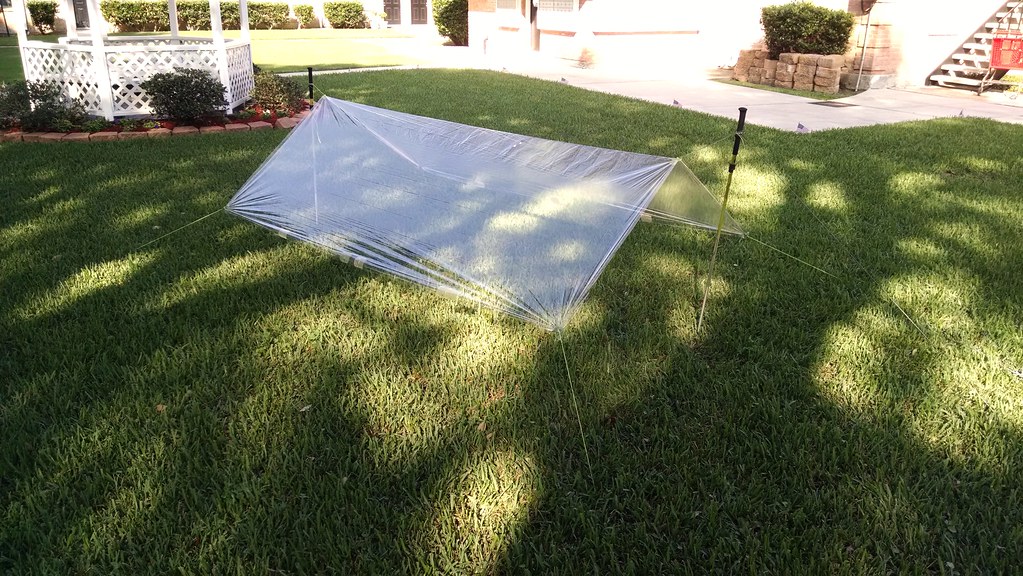
Tarps are great if you don’t have much time. They’re also good if you just need protection from the sun or rain.
But you might notice they’re missing something: they don’t have much insulation. So they aren’t as good for keeping you warm.
Your turn
Try building one of these shelters, or your own design! Think about
- How will the shelter keep you from getting too hot or too cold? (You can use what you figured out in Wednesday’s insulation activity)
- How will the shelter keep you dry?
- What else is helpful about your shelter?

If you have woods or trees near you, you can build a shelter big enough for yourself. If you’re in a public park, it’s a good idea to take your shelter apart afterwards, so that you ‘leave no trace’ in the woods.
Can’t make it to the woods? No problem! You can also build a mini-shelter for a toy or stuffed animal. You can find leaves and sticks to use in yards and parks.